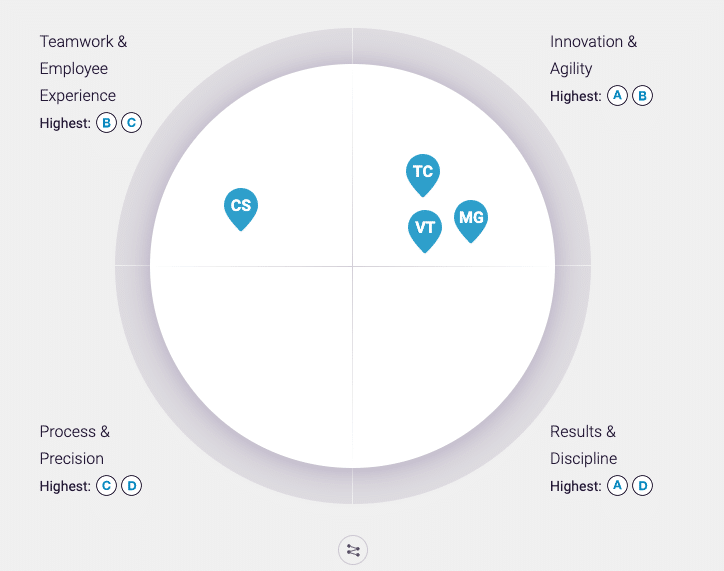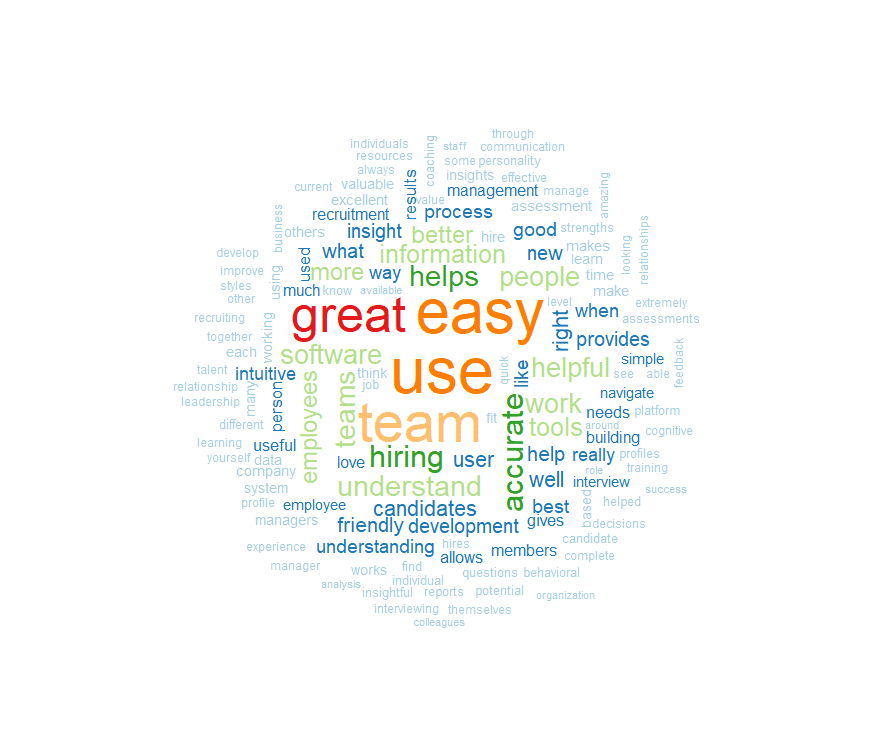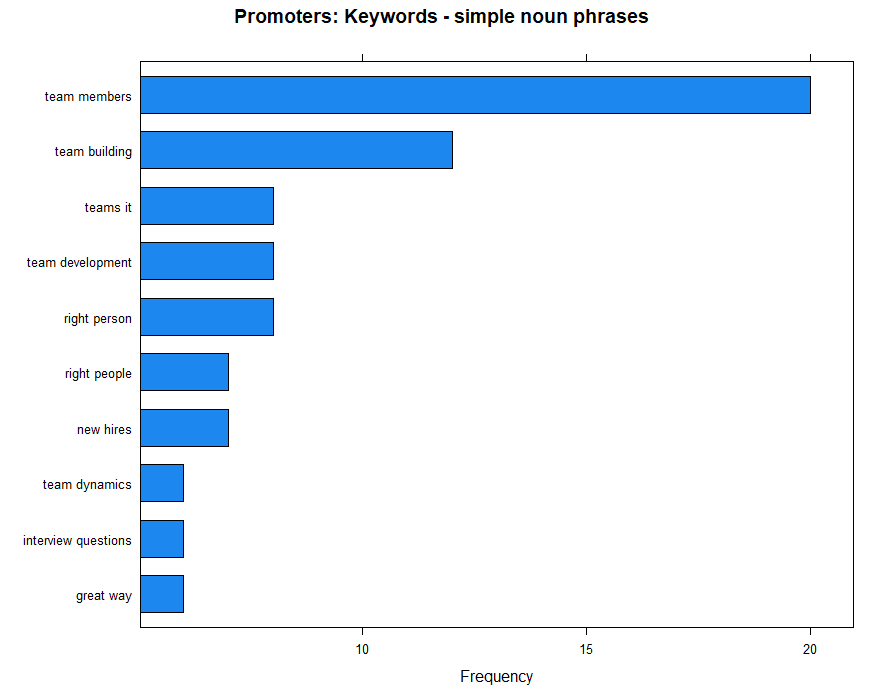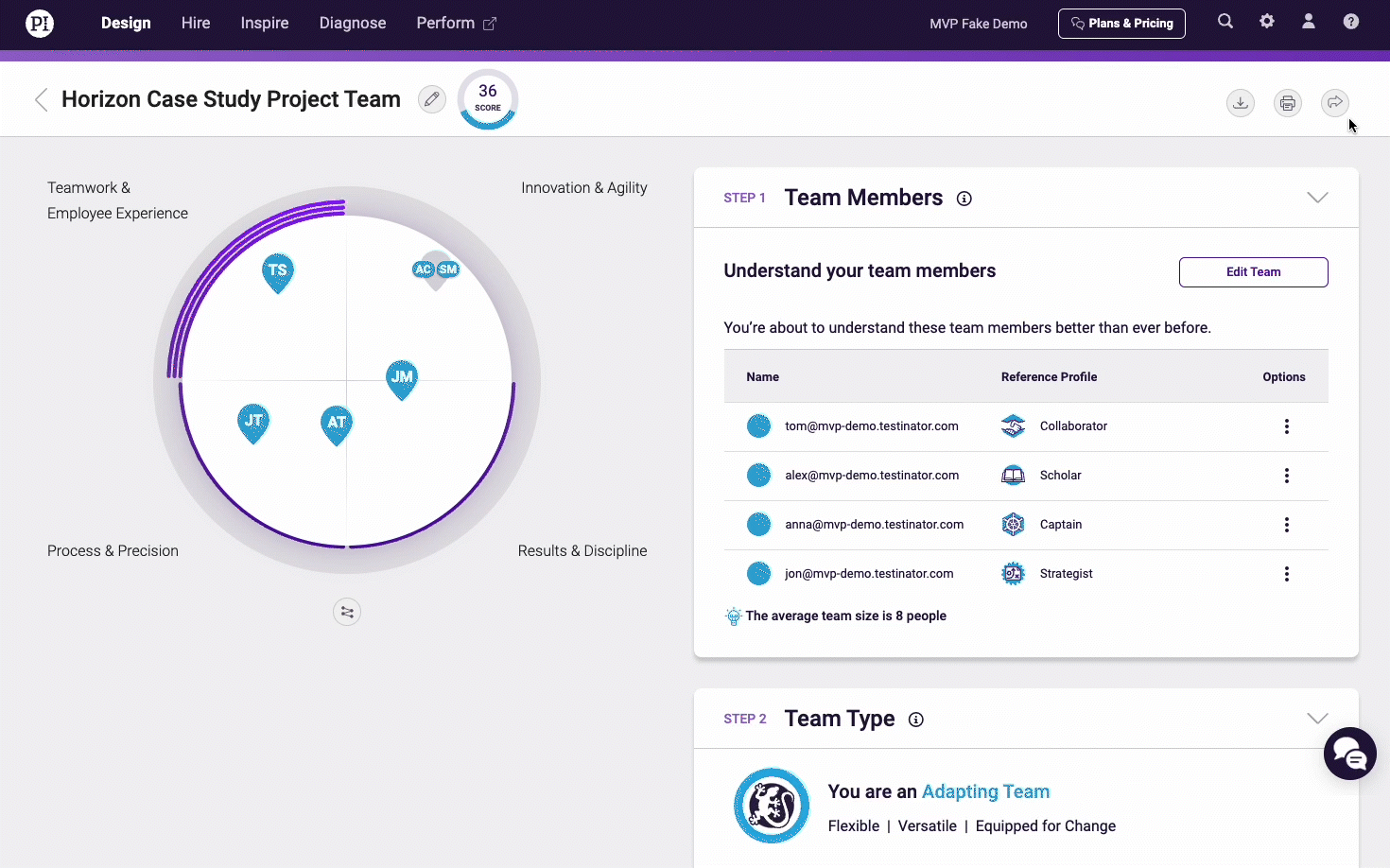How does your business measure customer satisfaction? Do you have a team in place to tackle this priority?
Your answers might vary depending on industry, the size of your customer base, and a range of other factors. But one thing’s for sure: You need some sort of system if you want to accurately gauge customer sentiment and apply it to your business.
That’s especially true when those customers are offering positive sentiments. You can use this data to know you’re on the right track for getting product hand raisers, or people to participate in case studies. You can’t rely solely on word of mouth if you want to establish a network of product evangelists.
Understanding happy and unhappy customers
Enter the Net Promoter or Net Promoter Score (NPS). NPS measures the percentage of customers willing to recommend a company’s products or services to others, as well as those who are not.
Here at The Predictive Index, we facilitate the NPS survey twice a year—typically in January and in July. Our survey is open for two weeks, and once a user completes it, our SVP of Operations sends a quick note thanking the customer for responding (regardless of whether the response is positive or negative), and offers an opportunity to speak to a member of our team.
With those follow-up calls, we’re able to identify promoters of our product, who can then engage in further conversation with our marketing team. From there, we can craft tangible improvements around that feedback narrative.
We offer follow-ups to both promoters and detractors, and everyone has an opportunity to share their thoughts. In the end, we have better context and feedback to pass along to our product (among other) teams.

Translating customer sentiment into action
When the survey closes, our teams analyze the data and complete what’s called “Natural Language Processing” based on the responses. After an analysis, we share our findings and recommendations with our executive team. From there, we share with the organization and inform our Partner Network.
Once the executive team has an opportunity to review the analysis and draft an action plan, our Senior Leadership closes the loop with all the clients who received the survey. We advise them of our top findings, and the actions we are taking through the next quarter and beyond.
Here’s a snapshot of the timeline:
Before:
- -60 days: Start planning and kick things off with the NPS team.
- -45 days: Meet with key stakeholders to review surveys and make any edits.
- -30 days: Edit the survey; proof and edit emails to clients.
- -14 days: Test the survey and email.
- -1 day: Send a test batch of the survey to 100 clients; wait for responses, then send to the rest of the client list.
And after:
- +7 days: Share preliminary results with the org.
- +14 days: Close survey and start analysis of the data (Natural Language Processing, trends, changes in data, etc.).
- +18 days: Share findings and insights with the executive/key-stakeholder team; develop actions and owners.
- +21 days: Conduct client calls with respondents.
- +30 days: Send follow-up email to all clients with themes and action points.
Your timeline may look a little different depending on what’s best for your organization. But you can’t execute any comprehensive NPS process without a balanced team.
What does a balanced NPS team look like?
If you’re planning on putting together a talent optimized team to facilitate NPS, here are some key behavioral drives that you may want to consider:
- Dominance – When presenting the findings to the executive team or the organization, expect some level of pushback. One team member should be comfortable explaining the business context when attendees are asking for further analyses.
- Extraversion – At least one person on this team should be comfortable with presenting the data to larger audiences, such as the executive leadership team, the organization, and any other channels that are impacted by clients’ responses.
- Patience – There’s a lot of planning involved, but also a lot of opportunity to pivot from previous ways of thinking or make new additions to the survey. You want someone who works at a fast enough pace to make the necessary changes and follow up with clients in a timely manner.
- Formality – Successful execution of NPS requires attention to detail, through planning and process. You need a team member who is precise and diligent with the analysis of the data once the results are in, or someone else who can flex that behavior.
Both the Process & Precision and Results & Discipline quadrants are good indicators of where the group has to flex to meet the objectives of this project. Understanding that our Exploring Team might have a tendency to overlook fine details helps guide our focus.
Here’s what Team Discovery revealed about our group:

A measuring stick, not a magic wand
As a business, it’s important to keep your goals for this process in perspective. Ask yourself: What are we hoping to achieve with this information?
While the NPS is a measuring stick for user advocacy, it’s not meant to solve all your software problems. First, NPS disregards passive sentiment (those who score 7 and 8). This may cause some loss of insight from engaged users.
Second, NPS depends on a variety of factors; so it’s important to recognize what’s driving that sentiment. Start by asking, “What is the reason you voted that way?” The best practice is looking at the text responses given to this question. Users want to help you, given the opportunity. Depending on user engagement, you’re likely to receive text responses about 50-75% of the time. In our case, 89% of all responses to our latest survey contained meaningful text.
Reading thousands of feedback texts isn’t scalable. So what else can you do? To start, your team can take advantage of Natural Language Processing (NLP) tools. These are available as open source content. Quantifying text data with NLP provides you with a meaningful story to tell.

Marrying BI with behavioral data
At PI, we use word clouds and word frequencies to find patterns in customer sentiment. In our latest survey, “team building” and “team development” phrases dominated the sentiment. This led us to focus our work around our Team Discovery product. This way, we’re able to recognize the pain points of our end users and improve our software in practical, meaningful ways.

How does your NPS process measure up? Are you collecting data that truly helps you improve your tools for the end user? It helps to have a balanced team in place to complement a refined process.








